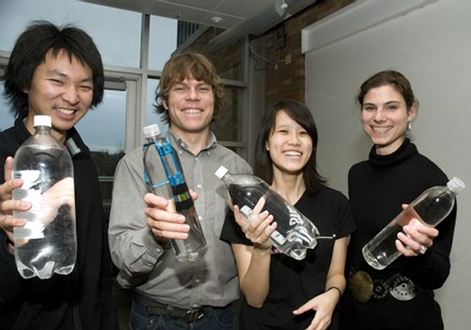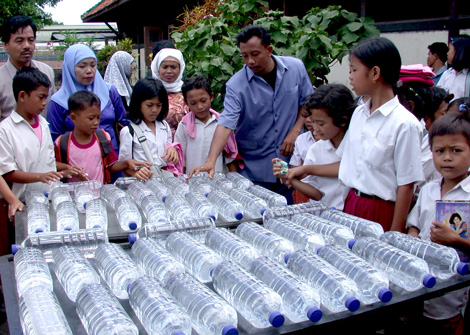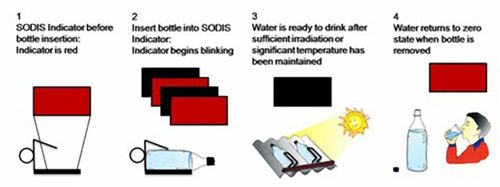Engineering Students Create Prizewinning Water Disinfection Tool

Chin Jung Cheng, Charlie Matlack, Penny Huang, and Jaqueline Linnes have designed a way to know when solar disinfected water is safe to drink
In many parts of the world, finding clean drinking water can be very difficult. Close to 1 billion people do not have access to safe water, a problem which, together with lack of basic sanitation, is responsible for 88% of all cases of disease and close to 5,000 children’s deaths every day.
To help combat this serious issue, many aid organizations advocate solar water disinfection (also known as SODIS), or the practice of leaving plastic water bottles out in the sun to kill off harmful bacteria. The only problem with SODIS is that for now users must estimate the length of time a water bottle needs to soak up rays before it has been fully sanitized by heat and UV-A radiation.

People using SODIS to clean water in Indonesia
Fortunately, a team of engineering students from the University of Washington have come up with an inexpensive, innovative way to improve SODIS: an electronic indicator that signals when water has been exposed to enough sunlight. Their invention won a $40,000 prize from the Rockefeller Foundation (facilitated through InnoCentive Inc.), and most of its parts can be found in cheap solar calculators.
The students’ solar indicator wraps around the bottle and uses light-sensitive electronics to monitor the amount of sunlight passing through the water. Here’s a step-by-step illustration of the process:

The UW team made this device specifically for The SODIS Foundation, a non-profit dedicated to eliminating water contamination in impoverished parts of Bolivia. With the help of grants from the foundation, these young engineers hope to develop a full prototype and aim to start their own non-profit organization.
Now that’s pure genius!
Support worldwide clean water projects here.
Images:
University of Washington
SODIS Eawag/Wikipedia
Filed under: e-News, Environmental
Tags: Biomedical, Environmental, Giving Back, Solar








